Astrolabe 31: Robot Sheep

Robot Sheep
In recent years, the rise of artificial intelligence has made significant strides in various fields, including content creation. With the advancements in natural language processing, AI-generated content is becoming more sophisticated and closer to human-level writing. However, while AI-generated content has its advantages, it poses a significant threat to the livelihood of journalists, writers, and artists.
One of the most prominent advantages of AI-generated content is speed. With the ability to produce a vast amount of content in a short period, AI-generated content can quickly outpace human writers in terms of productivity. This has led to concerns about the potential loss of jobs in the writing and journalism industry. According to a report by the World Economic Forum, over the next five years, automation could lead to the displacement of 75 million jobs globally, including those in the creative and media industries.
Moreover, AI-generated content can be produced at a much lower cost than human-written content. As a result, businesses and media companies are increasingly turning to AI-generated content to reduce their expenses. This trend has already begun, with major news organizations like Reuters and The Associated Press using AI-generated content to create automated news stories.
However, the quality of AI-generated content is still not up to the standards of human-written content. While AI-generated content may be good at generating straightforward news stories, it lacks the creativity, nuance, and human touch that comes with human writing. As Wired’s Matt Burgess wrote in a 2019 article, "AI-generated articles are…stilted and devoid of emotion. They lack the narrative flair and journalistic instinct that make human reporting so interesting."
Furthermore, AI-generated content poses a threat to the intellectual property rights of writers and artists. While there are laws protecting original works created by humans, there is no legal framework in place for protecting content created by machines. This has already led to instances where AI-generated content has been used without proper attribution or compensation. As The Verge’s James Vincent noted in a 2018 article, "The prospect of companies generating news stories, memes, and other copyrighted material without the need for human input poses a serious threat to those whose livelihoods depend on licensing their creations."
In addition to the loss of jobs and intellectual property concerns, AI-generated content can also perpetuate biases and misinformation. AI algorithms are only as unbiased as the data they are trained on, and if the training data contains biases, the resulting AI-generated content will also be biased. Furthermore, AI-generated content can be used to spread fake news and propaganda on a massive scale. As Wired’s Will Knight wrote in a 2019 article, "AI-generated content is well-suited to disseminating disinformation and propaganda, given its ability to generate large amounts of text and mimic the style and tone of existing content."
In conclusion, AI-generated content presents significant challenges for the livelihood of journalists, writers, and artists. While AI-generated content has its advantages in terms of speed and cost, it lacks the creativity, nuance, and human touch that come with human writing. Additionally, the use of AI-generated content raises concerns about job displacement, intellectual property rights, bias, and the spread of misinformation. As the use of AI-generated content continues to increase, it is crucial for media companies, policymakers, and content creators to address these challenges and work towards a future that balances the benefits of AI with the needs of human writers and artists.
This feature was written by ChatGPT.
Out & About
Out & About is where I highlight my work around the web—some recent and some old favourites.For all the latest about Fight, Magic, Items, check out my recent Spring promo round-up:
Since then, I also made an appearance on the Super Gamer Podcast. We chatted about Fight, Magic, Items, of course, but also got to dig into the magic of late ‘90s video game manuals, how nostalgia and childhood experience shape the art we create as adults, and… hockey? The host Mark sure did his homework, which led to a deep, nuanced discussion about a lot of topics I don’t always get to touch on in similar interviews. I had an absolute blast!
Some more:
- Podcast: Pantheon of the Blood God: Lunar: Silver Star Story
- Podcast: Still Loading #256: Aidan Moher
- “How the greatest Japanese RPGs of the ‘90s came to the West” (Washington Post)
LTTP—Wario Land 3 (Game Boy Color, 2000)
LTTP (Late to the Party) is a regular column where I let Twitter decide which retro game I’ll play for an hour. Do your worst, Twitter!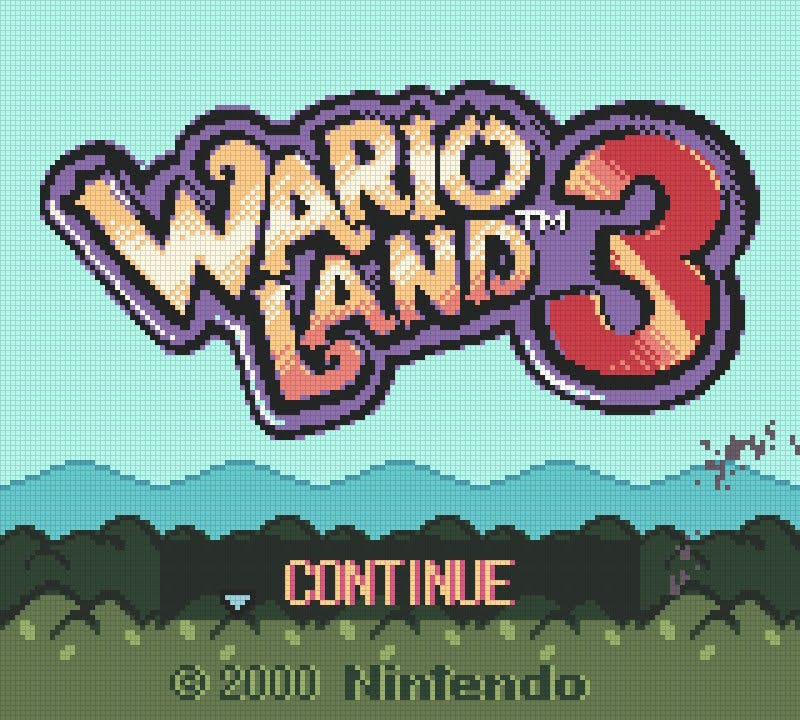
If you teleported back to any random day between November, 1992 and the following summer, you’d likely find me glued to my Game Boy playing Super Mario Land 2: 6 Golden Coins. I liked the first Super Mario Land, which I got with my Game Boy alongside Tetris, but I *loved* 6 Golden Coins. Its huge, chunky sprites, unique environments, and emphasis on exploration, including a big, node-based map, felt like a substantial addition to Mario canon.
The third Super Mario Land game turned the tables and put series villain—who’s since become a Mario mainstay—in charge, and changed up the gameplay significantly. By Wario Land 3—which, by my count, is Super Mario Land 5—is a full-blown level-based Metroidvania. The big twist is that Wario can’t die. Instead, enemy attacks alter his state—setting him on fire, turning him invisible, making him heavy—allowing him to interact with the environment in amusing ways.
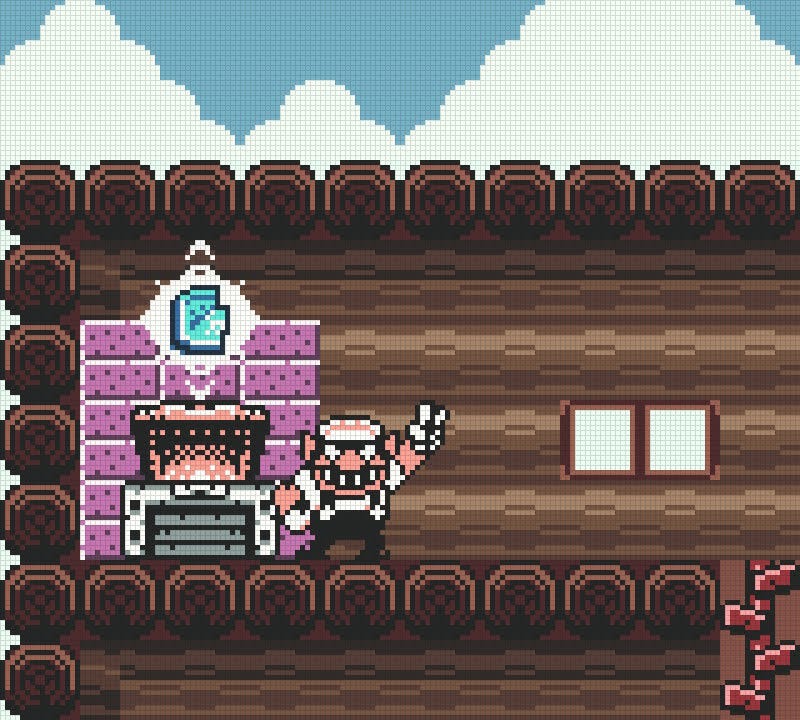
It’s always a joy to dig into a Game Boy Color-era game—they’re like super sophisticated NES games—and playing Wario Land 3 reminded me more of my adventures in Link’s Awakening than 6 Golden Coins thanks to its focus on exploration, character abilities, and back-tracking. It’s clever, has wonderfully expressive spirtes and animations, but, like Link’s Awakening, sometimes its exploration is poorly signposted—something that would’ve delighted me as a kid, but feels a bit listless to me as an adult with limited gaming time. I’ve always enjoyed low-risk development environments like the late-era Game Boy Color for the way they encouraged developers and publishers to experiment, and Wario Land 3 is proof positive of what can happen if you let a series like Mario really explore the boundaries of 2D platforming. Easily one of the all-time great Game Boy games.
Wario Land 3 was released on Game Boy Color in 2000. It’s since been rereleased on Nintendo’s Virtual Console and Nintendo Switch Online. Recommended Reads—Bookshops & Bonedust by Travis Baldree
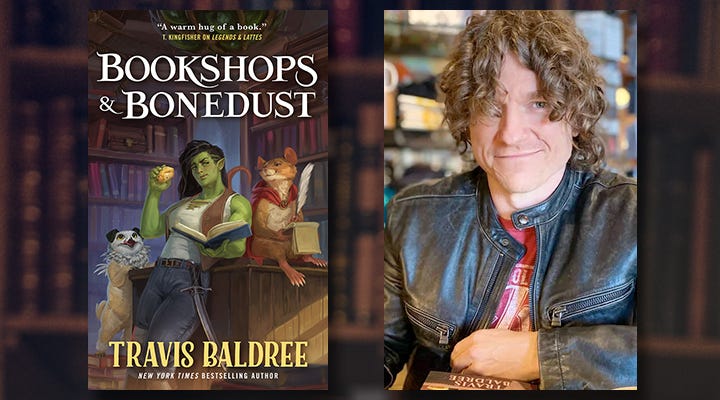
I don’t often cover books that are several months out from publication, but, y’all, this book is worth the preorder. It wasn’t long ago (Astrolabe 28, in fact) that I was raving about Travis Baldree’s Legends & Lattes, which went crazy viral last spring as a self-published novel before being acquired by Tor Books for traditional publication. “Splendid doesn’t even begin to describe what Baldree’s created in Legends & Lattes,” I wrote. “I need more. Now.”
And, now, I’ve got more.
But, inside, I honestly wondered whether Baldree would be able to recapture the magic and charm that made Legends & Lattes such a charming, cozy surprise. Dear reader, I needn’t have worried.
Set many years before Legends & Lattes, Bookshops & Bonedust is a polished follow-up that delivers exactly what I expected, needed, and wanted—with a clear understanding of how a prequel can stand on its own while also making its predecessor stronger in retrospect. Baldree’s got this cozy fantasy thing down, and the settings he creates, the people he populates them with, and the low stakes conflicts that arise are the perfect antidote to our world gone crazy. I didn’t know if a prequel story about protagonist Viv’s younger days would appeal—I liked that she was older and weary, broken and needing healing in Legends & Lattes; I didn’t know if I’d be able to leave my favourite characters behind. I didn’t know if trading Thimble’s cinnamon buns for literally anything (even books) would work. But, it does. Brilliantly. I would die for Potroast.
If you loved Legends & Lattes, you’re in for an absolute treat. Go preorder Bookshops & Bonedust right away. If you haven’t read Legends & Lattes, well, what are you waiting for?
Bookshops & Bonedust will be available from Tor Books on November 7, 2023.
Quest Markers
Quest Markers is a collection of the coolest stuff I’ve read around the web lately.For more on how AI-generated content is destabilizing the careers of journalists, writers, editors, artists, and other creative professionals, check out Jason Sanford’s fabulous issue of , which digs into the proliferation of AI-submitted content drowning short fiction magazines.
- Sci-Fi Publishers Are Bracing for an AI Battle (WIRED)
- Pathfinder Developer Bans AI Art, Takes A Hard Stance (Kotaku)
- Ring, Ring, Ring! De La Soul’s Back Catalogue (Finally) Hits Streaming Services. (Vulture)
- Aubrey Powell shares how he designed one of the most iconic album covers of all time (CBC)
- Creating the look of a child's hand-crafted game in RPG Time: The Legend of Wright (Game Developer)
- 17 years ago, Yakuza reinvented video game masculinity (Inverse)
- The Legend of Zelda: Link’s Awakening committed a narrative sin — and got away with it (Polygon)
- Old G4 Review Is Forcing Gaming To Reckon With Its Racist JRPG Past (Kotaku)
- Modern, A Format I Once Knew (Hipsters of the Coast)
- Time has redeemed Dark Souls 2 (PC Gamer)
- In Like a Dragon: Ishin Kazuma Kiryu Returns to His Samurai Roots (IGN)
- Is there a future for video games journalism? (Nieman Lab)
- Discovering Japan's Forgotten Arcade History At The Dagashiya Game Museum (Time Extension)
- Hogwarts Legacy lacks magic — and Rowling's views have tainted series, says critic (CBC)
- Every FromSoftware SoulsBorne DLC Ranked (IGN)
- 20 Newly Discovered Terry Pratchett Stories Will Be Published This Year (Tor.com)
- Octopath Traveler 2 makes the case for more ‘short story’ games (Polygon)
End Step
Tell me, which part of this issue of Astrolabe did you like better? The part written by a computer, or the part written by me? How far into the feature were you when you realized it was AI dogging on itself? Nothing’ll replace the human touch, but business often doesn’t care about that.
Support
There are lots of ways to support Astrolabe and my other work. Check ‘em out!
Keep In Touch
Enjoy Astrolabe? Want more SFF and retro gaming goodies? You can find me on Twitter and my website.
Credits
Astrolabe banner photo by Shot by Cerqueira on Unsplash

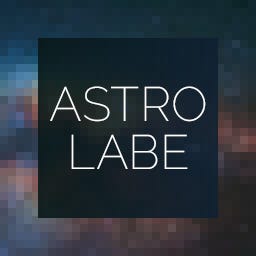

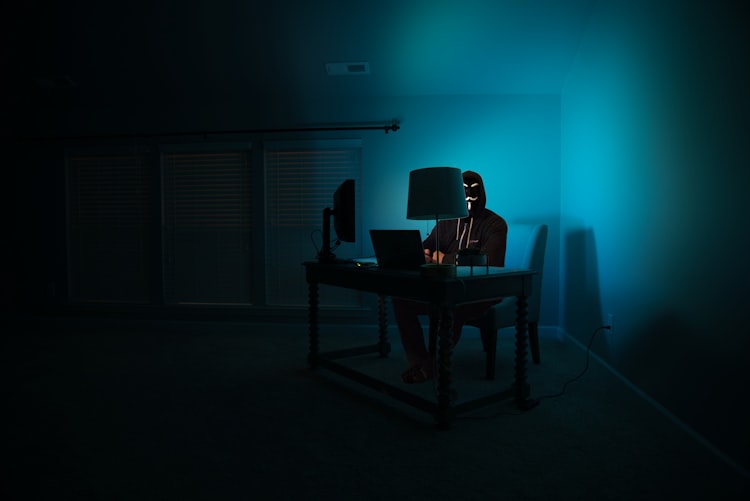
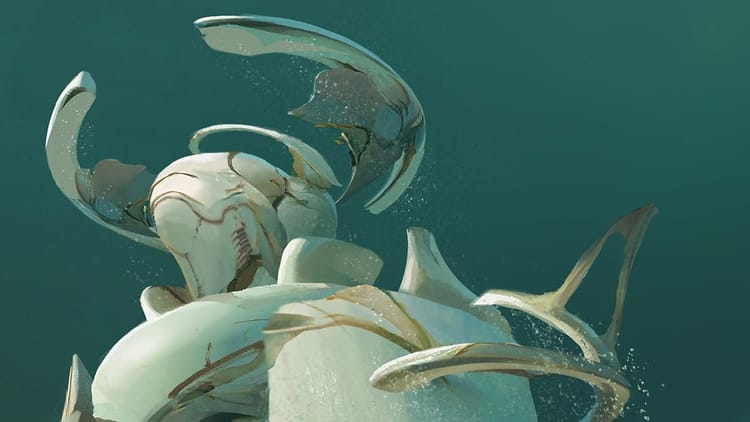
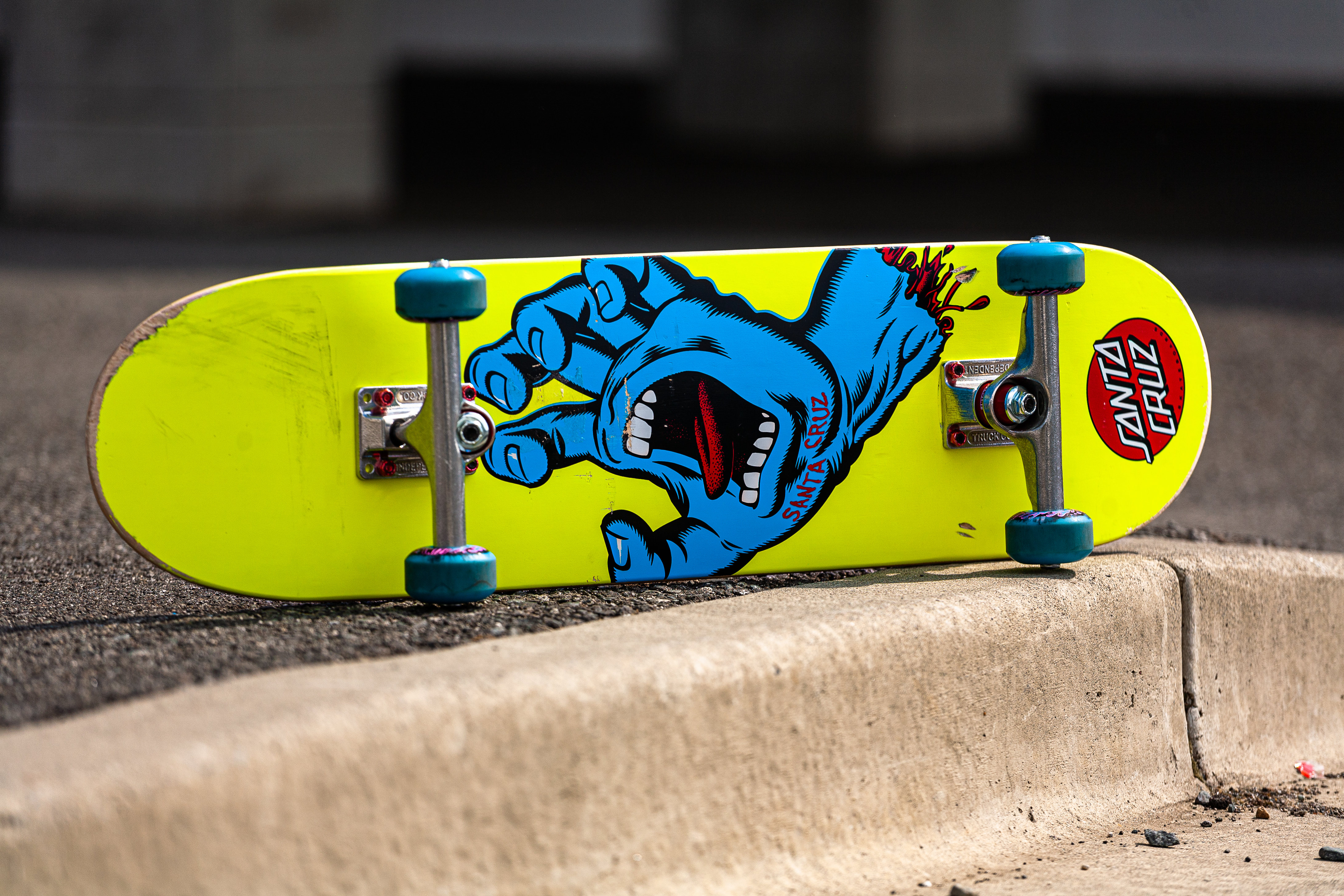

Member discussion